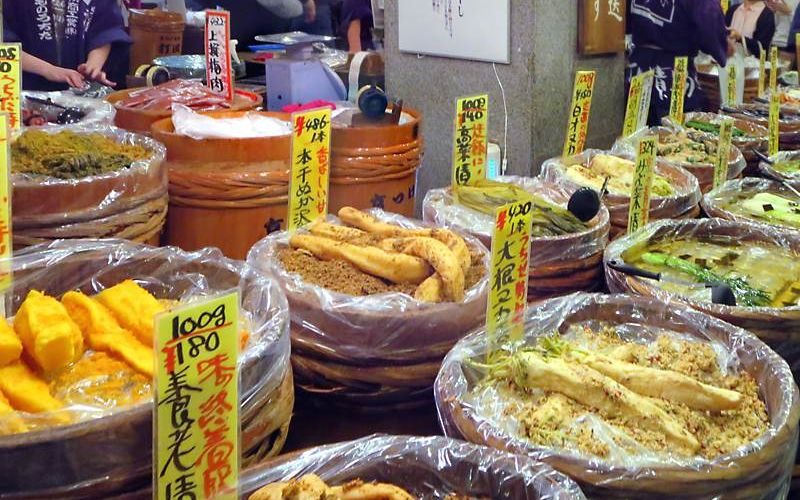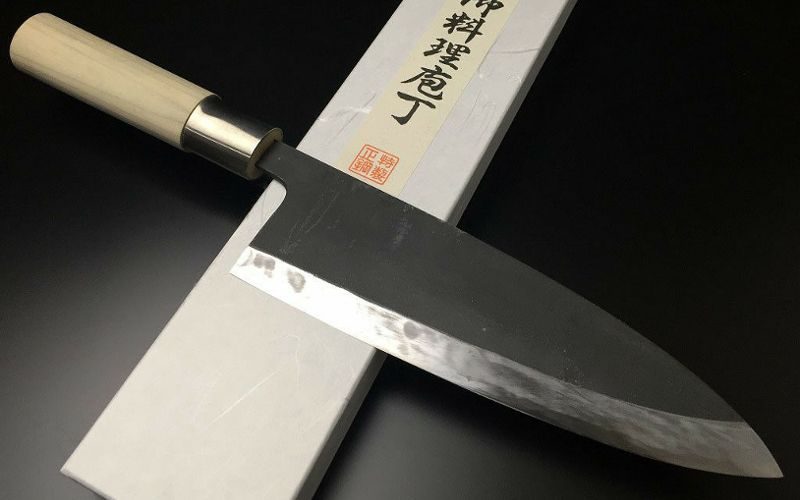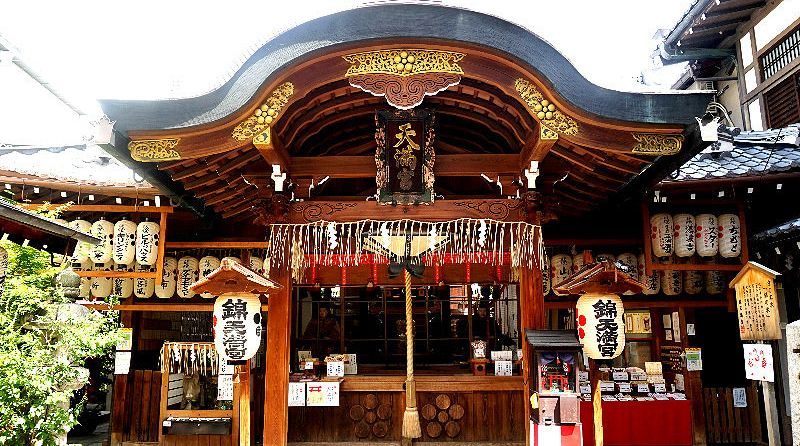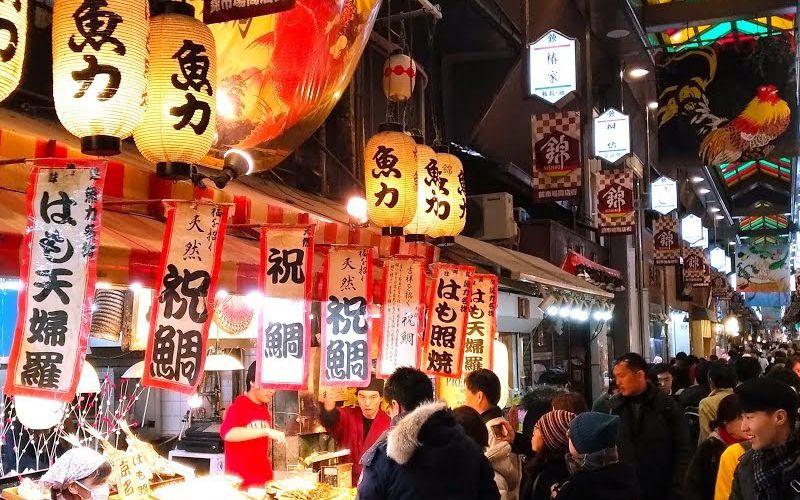Nishiki Market, known in Japanese as Nishiki Ichiba, is a narrow shopping street in Kyoto. Often referred to as “Kyoto’s Kitchen” or “Kyoto’s Pantry,” this fresh food market is five blocks long and lined with over one hundred restaurants and shops. Some shops are tiny stalls, while others are enormous two-story buildings.
The market has a pleasant, busy atmosphere that will allow you to taste Japan’s culinary culture at its finest.
We’ve compiled everything you should know before you explore this foodie’s delight.
Table of Contents
The History of Nishiki Market
Nishiki Market has been a hub of commerce for centuries. The first shop opened its doors around the year 1310. By the 1600s, the market was thriving. Some of the shops have been operated by the same families for multiple generations.
With the passage of time, more modern shops are finding a home in Nishiki Market. However, enough traditional shops remain to offer you a nostalgic look at Japan’s traditional shotengai, or shopping street.
How to Get to Nishiki Market
From Kyoto Station, take the Karasuma Subway Line to Shijo Station. Nishiki Market is located one block north of Shijo Avenue, between Teramachi and Shinmachi, less than a five-minute walk from Shijo Station.
Alternatively, you can utilize Karasuma Station or Kawaramachi Station on the Hankyu Line. Nishiki is a three minute walk from either station.
Buses headed for Nishiki depart the Karasuma Nanajo Bus Stop every 20 minutes. Take bus number 5. It will make about five stops during the 20 minute journey.
Opening Hours and Fees
Opening hours vary from store to store, but most are open between the hours of 9 am and 6 pm. Some shops may open earlier or remain open later. As they are small, family-run businesses, a number of the shops are closed one or more days each week, typically on Sunday or Wednesday. There is no admission fee to enter Nishiki Market.
Best Time to Visit
Filled with new sights and savory aromas, when is the best time to visit Nishiki Market? The simple answer is, whenever you are hungry. Try to go at a time when you are not in a hurry and you can enjoy the experience of sampling small amounts of foods and beverages from different stalls. Stopping in for lunch or an early dinner is ideal. This is also the time that the most shops are open and the market is at its most dynamic.
Food: What to Eat in Nishiki Market
Nearly all of the food items sold at Nishiki Market are grown, caught, or produced locally. Some shops give out samples or offer samples for a small price. While eating in the street is generally considered poor manners in Japan, the practice is reveled in at Nishiki Market.

Restaurants in Nishiki Market range from the typical to small stalls with a couple of stools and a countertop. Many of the restaurants specialize in just one type of food. They may be attached to a store that specializes in the ingredients or implements necessary to prepare the dish.
Sesame dumplings offer something for every palate. These small balls may be filled with cheese, sweet pastes, or savory ingredients. Perfect for eating on the go, senbei are seasoned rice crackers. Flavors include miso, salt, plum sugar, and soy sauce. Another favorite is the tamagoyaki, or Japanese omelet.
If you are feeling adventurous, do not miss out on the chance to try tako tamago – skewered octopus with a quail’s egg inside the head. The octopus is candied, a combination of sweet and salty flavors.
Wash down your snacks with fresh pulped grapefruit juice, served with a straw directly from the fruit itself. For dessert, try a variety of mochi, or sticky rice cakes. Mochi comes in many flavors, including sweet mochi; dango, mochi balls on a stick and dipped in a sweet and salty soy sauce; sakura mochi, pink and served on a leaf; or kashiwa mochi, wrapped in an oak leaf and filled with red bean paste.
Restaurants Near Nishiki Market
If you’re somehow still hungry, or if you just need to sit and get off your feet with a cup of tea, a number of restaurants are located in and around the market. You’ll find unique offerings, such as Gogyo Ramen, which specializes in flame-seared “burnt ramen,” with a distinctly smoky umami flavor.
Don’t miss the famous Snoopy Cha-Ya, or Snoopy Cafe. There is a gift shop on the ground floor, and cute Snoopy elements adorn each dish.
More Than Food
In addition to fresh seafood and produce, you’ll also find an abundance of kitchen and cooking items. Personalized engraved chopsticks are a favored souvenir, especially those from the Ichihara Heibei Shoten specialty store.
Aritsugu knives are also much sought-after. Originally swordsmiths, Aritsugu traces its history all the way back to 1560, and is now owned and operated by the family’s eighteenth generation.

Nishiki Tenmangu Shrine
The original Tenmangu Shrine was built over one thousand years ago. It has moved from one location to another more than once over the centuries, and now rests outside the Nishiki Market. You will recognize it by its wall of cream-colored lanterns with red elements and Japanese script.

Enshrined at Tenmagu is the god of learning, making it a favorite spot for prayers of luck in studying and schoolwork. Plum-shaped amulets are also available for purchase. Their purpose is to hold a written wish, after which the ornament is hung on a nearby tree.
